The total volume of liquid in the cooling system is 2.23 liters.
The standard antifreeze concentration is 50% when using an ethylene glycol-based concentrate. Also currently available for sale is ready-to-use antifreeze that does not require dilution with water.
Attention! Coolant is replaced when the engine is cold (to avoid burns).
To change the coolant, you must first remove the seat (see «Seat - removal and installation»), left facing (see «Side trims - removal and installation») and fuel tank (see «Fuel tank - removal and installation»).
1. Install the motorcycle on the center stand.
2. Open the filler cap of the cooling system.
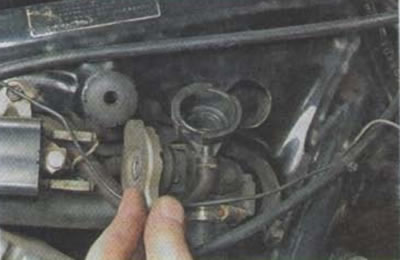
3. Open the filler cap of the expansion tank.
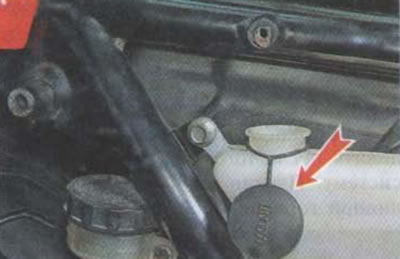
4. We substitute a container with a volume of at least 3 liters under the drain plug of the cooling system.
5. Use a 10 mm spanner to loosen the drain plug.
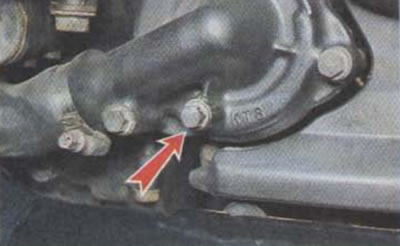
Attention! Liquid flows out under pressure. It is important to correctly calculate the position of the container so as not to spill the liquid.
6. Turn off the cork.
7. Drain the coolant from the coolant pump housing, radiator and pipelines.
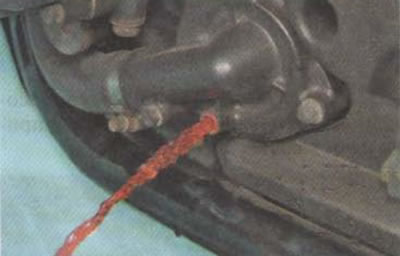
8. Alternately, with a 10 mm wrench, we loosen the tightening of the left and right drain plugs on the cylinder block. Substituting the container, drain the coolant from the cylinder cooling jacket.
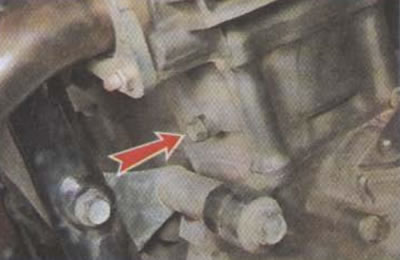
Left cylinder block drain plug | 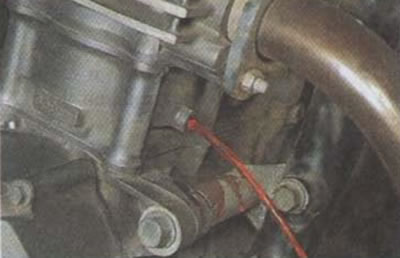
Right cylinder block drain plug |
9. Inspect the drain plugs and their copper sealing washers.
10. If the washer is deformed, it must be replaced. If it is not possible to install a new washer, it is recommended to anneal (red hot and let cool) old washer before installation.
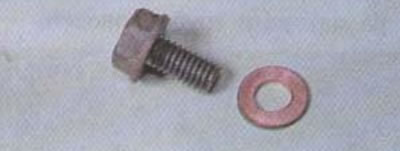
11. Remove the clamp with pliers and disconnect the upper tube from the expansion tank.
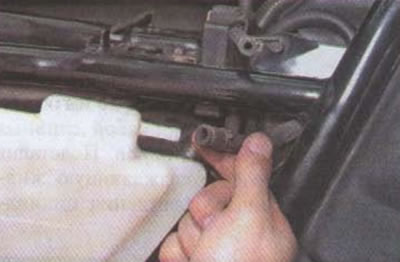
12. Using a 10 mm wrench, unscrew the bolt securing the expansion tank to the motorcycle frame.
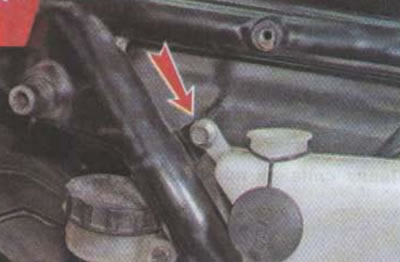
13. Turn the reservoir over and drain the remaining coolant from it.
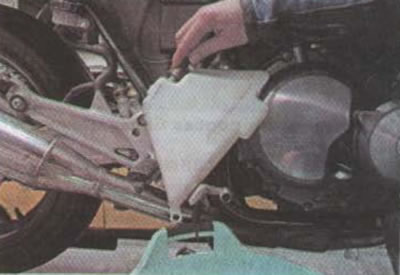
14. We wrap the drain plugs on the coolant pump housing and the cylinder block (2 pcs.) and tighten them with a torque of 6 N·m.
15. We install the expansion tank in place, put the top tube on the tank fitting.
Attention! We fill the liquid slowly, in a thin stream, so that the air in the pipelines and the radiator has the opportunity to escape and air jams do not appear in the system.
16. Pour 1.6 liters of coolant into the filler neck of the cooling system. If the liquid level rises «under the cork», but the filled amount is less than the specified volume, which means that an air lock has formed in the system. Fluid can be topped up after the air has left the system. Close the filler cap tightly.

17. Fill the coolant into the expansion tank to the top mark.

18. Close the expansion tank cap.
19. We examine the system. There should be no coolant leaks.
Attention! When starting the engine, do not exceed idle speed!
20. We start the engine. Let it work for 5-10 minutes. We constantly monitor the system for leaks, especially at hose connections and drain plugs.
21. We turn off the engine. If the coolant level in the expansion tank has dropped, add coolant to the upper mark.
Attention! It is recommended to open the filler cap of the cooling system not earlier than 10 minutes after the engine has stopped.
Despite the short period of engine operation, excess pressure arises in the cooling system due to heating of the liquid. Open the filler cap carefully, covering it with a rag folded several times so that splashes of coolant do not burn your hands.
22. Open the filler cap of the cooling system and bring the volume of liquid in the system to 1.6 liters.
23. Close the filler cap and the expansion tank cap. We start the engine and leave it idling until it warms up completely. The moment the engine warms up completely is considered to be the moment the radiator fan turns on. After the engine has completely cooled down (1.5-2 hours) Check the coolant level in the expansion tank again. If necessary, top up to the top mark.

31.01.2024 18:26